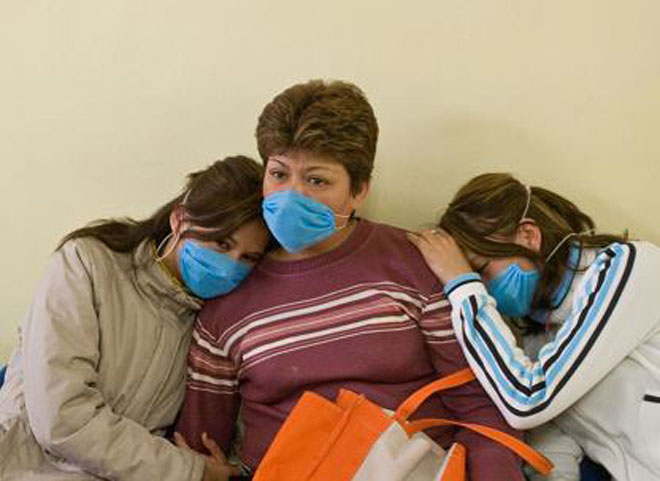Two weeks after Afghanistan announced its first death from the A/H1N1 flu, the country has seen the epidemic's death toll rising sharply, with a shadow cast on the already difficult anti-terror war, Xinhua reported.
On Monday, Afghan Ministry for Public Health said 11 Afghans, including one soldier, have died from the virus.
According to the ministry, 779 cases of A/H1N1 have been confirmed so far, with 456 of them being Afghans, and the rest foreigners.
Among these cases, 453 have been reported in Kabul, 272 in Parwan province and the rest in Kandahar, Herat, Balkh, Bamiyan and Nangarhar provinces.
On Nov.1, the ministry declared health emergency, shutting down schools, universities and public restrooms for three weeks, and advising the public to avoid large public gathering.
Health officials also advised anyone with a fever to stay home from work, and those with mild symptoms to wear a mask in public places.
Worried about the quickly spread virus, people wearing blue surgical masks can now be seen on the streets of Kabul. Sports clubs and wedding halls also have closed their doors.
The disease also comes as a threat to troops in Afghanistan, as they now have to fight the A/H1N1 flu amid the war against Taliban insurgency.
Public Health Minister Dr. Mohammad Amin Fatemi said 710 of the779 H1N1 cases have been reported among military personnel, with 320 being U.S. and Italian troops deployed in Afghanistan and 390 Afghan National Army (ANA) soldiers.
More than 100,000 U.S. and NATO-led International Security Assistance Force (ISAF) have been stationed in Afghanistan to fight Taliban-linked insurgents and al-Qaida operatives to stabilize security in the war-torn country.
The first case reported in July was among U.S. military personnel stationed at Bagram air base the headquarters of U.S.-led Coalition forces in the post-Taliban Afghanistan.
To contain the pandemic influenza, Afghan Health Ministry has distributed antiviral medicine to 34 Kabul hospitals and clinics. But Health Ministry spokesman Ahmad Farid Raaid said there are only about 50,000 doses, whereas up to 300,000 patients could potentially require treatment.
According to the statistics compiled by Afghanistan's Public Health Ministry, up to 22 percent of the population, or as many as6.6 million people, could be infected.
Raaid said the ministry has increased its appeal for funding to combat the disease to 125 million U.S. dollars, adding that the World Health Organization (WHO) had pledged 550,000 doses of H1N1 vaccines it receives.
But WHO' Representative Peter Graaff said because of global production delay and huge demand, WHO has not received any of the doses yet.
He predicts that the death toll in Afghanistan could increase significantly in the coming months.
"The population is poor. Many live in poor hygienic circumstances, and there is a large amount of malnutrition. The mortality rate in Mexico, where H1N1 affected poor people, was considerably higher than in the U.S. or Western Europe," Graaff said.






